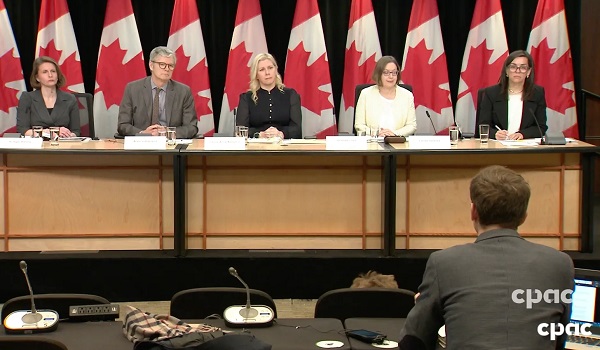Health
Thinking of taking a flu shot? Read this first…

From the World Council For Health
It’s not just that they’re ineffective, they also cause harm. Learn about safe alternatives such as Vitamin D, quercetin and zinc.
If you’re of a certain age or demographic and in the northern hemisphere, chances are you’re being invited or encouraged to get a flu vaccine. The claim is that flu vaccines protect you and others from coming down with flu – and that if you do get it, the symptoms will be mild. So, is this true?
Many scientists see the flu shot as an unnecessary measure. For one thing, there’s a big question over whether the flu vaccine even works, particularly for older people, for whom it is recommended. Studies show that the vaccines often do not match the circulating viruses and no significant effects on serious complications or hospitalizations have been demonstrated.
You’d think that vaccinating people against flu would lead to a reduction in deaths from flu. But figures show that this isn’t the case. In fact, even though the number of flu shots given has increased more than eightfold, the number of flu-associated deaths has remained more or less unchanged.
There’s a logical explanation, and it goes like this:
Antibodies are not enough
Flu vaccines, like any other vaccine, primarily rely on the so-called Th2 antibody response. This generates antibodies to help the body fight off the influenza virus once it enters the bloodstream. What vaccines don’t do is impact the first line of defence in the nasal mucosa. This part of the innate immune system does not use antibodies, and it is here where respiratory viruses replicate.
This is why vaccines for respiratory viruses will never prevent infection or the transmission of the disease.
The immune response to vaccinations also decreases with age, which further reduces the already weak effect of vaccination in older people. Studies bear this out. In particular, a 2012 article in the British Medical Journal quoted an independent study that looked at data from 1967 to 2012 and concluded there isn’t strong evidence showing that the flu vaccine consistently protects people. While it does offer some protection for young, healthy adults who usually don’t face serious flu complications, the researchers noted that there is not enough evidence to support its effectiveness for older adults (65 and older), who account for more than 90% of flu-related deaths.
Recent research into the efficacy of flu shots also reveals their limitations
- In 2020, Anderson et al. showed that influenza vaccination of 60 to 70 year olds in England and Wales had no discernible positive impact on hospitalization or deaths:
- Another study in Japan reported on 83,146 individuals aged 65 years and followed them up over six years. In 2023, the incidence of hospitalization for influenza did not differ significantly by vaccination and the claimed protective effectiveness against incidence waned quickly after four or five months.
- Another 2020 study from Anderson and team analysed data covering 170 million episodes of care and 7.6 million deaths. Turning 65 was associated with a statistically and clinically significant increase in rate of seasonal influenza vaccination. However, no evidence indicated that vaccination reduced hospitalizations or mortality among elderly persons. The study points out that estimates were precise enough to rule out results from many previous studies.
This is not just a concern for the elderly but for all those with weakened immune systems, including those undergoing immunosuppressive treatments, or individuals with chronic health conditions. In such cases, the Th2 response may not produce enough protective antibodies to effectively combat the virus, leading to a higher risk of severe illness.
Here’s another reason to exercise caution of the flu vaccine:
Flu vaccines actually SPREAD the virus
Controlled studies published in the Proceedings of the National Academy of Sciences (PNAS) find that people who receive flu shots emit 630% more flu virus particles into the air compared to non-vaccinated people. In other words, flu vaccines spread the flu!
Physicians for Informed Consent has produced this concise summary of facts that you, your loved ones and your doctor should consider before a potential injection.
All this leads to an important next question:
If the flu shot isn’t a good idea, what is?
The flu shots’ limitations make the prevention and treatment of flu with nutritional supplements like Vitamin D, Quercetin, and Zinc more appealing and safe. These supplements not only enhance the immune response but also offer additional antiviral and anti-inflammatory benefits:
Vitamin D protects the lungs and airways – and much more besides
Studies have shown that Vitamin D supplementation can significantly reduce the risk of influenza infections by enhancing the body’s immune response. It works by modulating the expression of inflammatory cytokines and increasing macrophage function, which are essential for fighting off infections.
Moreover, Vitamin D has been found to protect the lungs and airways through the antimicrobial peptide cathelicidin, which has both antibacterial and antiviral properties. Vitamin D supplementation shows promise in reducing the risk and severity of respiratory infections, including influenza. The evidence suggests that consistent Vitamin D intake can lower the incidence of acute respiratory infections, shorten the duration of symptoms, and enhance immune response, particularly in the elderly. These benefits can translate into reduced hospitalizations and deaths due to flu, making Vitamin D a valuable component in flu prevention and management strategies.
Quercetin: a powerful antiviral and zinc’s vital wingman
Quercetin is a flavonoid found in many fruits and vegetables, known for its antiviral, anti-inflammatory, and antioxidant properties. It has been shown to inhibit the entry and replication of viruses in lung cells, making it a potent candidate for managing respiratory infections like the flu. Quercetin also acts as a zinc ionophore, facilitating the transport of zinc into cells, which enhances its antiviral effects. Studies suggest that the co-administration of Quercetin and Vitamin C can exert a synergistic antiviral action, further boosting immune response and reducing viral replication
Zinc: helps prevent and reduce infection severity and duration
Zinc is an essential mineral that supports various cellular functions of both the innate and adaptive immune systems. It interferes with the process that certain cold viruses use to multiply, thereby reducing the severity and duration of infections. Zinc is particularly important for the recruitment and activity of neutrophil granulocytes, natural killer cells, and T cells, all of which play critical roles in the immune response. Supplementation with zinc has been supported by evidence showing its effectiveness in preventing viral infections and reducing their severity.
In summary…
The questionable efficiency and safety of the flu vaccine raises important concerns that cannot be overlooked. Alternative approaches such as supplementing vitamin D, quercetin and zinc, are one way to enhance immunity without the risks associated with traditional vaccinations.
Moreover, the potential for the production of IgG4 antibodies as a response to the vaccine illustrates a complex interaction between immunization and immune system dynamics, where the very act of repeated vaccination may inadvertently lead to a weakened response against certain influenza strains. This effect can also result in the weakening of the immune system in general to fight infections and cancer. This highlights the need for continued research and dialogue about the benefits and risks of flu vaccination versus alternative preventive strategies.
As we navigate through flu seasons, it is crucial to remain informed and consider individualized approaches to immune health. Ultimately, a well-rounded strategy that includes lifestyle choices, nutritional support, and an understanding of the science behind flu immunization could empower individuals to make informed decisions that best suit their health needs. The World Council for Health stands for a better way.
Please subscribe to World Council for Health.
For the full experience, upgrade your subscription.
References:
1. Berndt, Christina: ‘Experten mit den falschen Freunden’, http://www.sueddeutsche.de/
2. http://influenza.rki.de/
3. http://www.gpk.de/
4. Committee concerning Influenza Pandemic (H1N1), 2009, http://www.who.int/ihr/emerg_
5. Di Pietrantonj, C.; Rivetti, A.; Bawazeer, G.A.; Al-Ansary, L.A.; Ferroni, E.: ‘Vaccines for preventing influenza in healthy adults’, in: Cochrane Database of Systematic Reviews, 2010, 7., Art. No.: CD001269, DOI: 10.1002/14651858.CD001269.
6. Wittig, Frank. Die weiße Mafia: Wie Ärzte und die Pharmaindustrie unsere Gesundheit aufs Spiel setzen, 2012Yan J, Grantham M, Pantelic J, Bueno de Mesquita PJ, Albert B, Liu F, Ehrman S, Milton DK; EMIT Consortium. Infectious virus in exhaled breath of symptomatic seasonal influenza cases from a college community. Proc Natl Acad Sci U S A. 2018 Jan 30;115(5):1081-1086. doi: 10.1073/pnas.1716561115. Epub 2018 Jan 18. PMID: 29348203; PMCID: PMC5798362.
The World Council for Health (WCH) is a grassroots, people-powered, non-profit initiative based in Bath, United Kingdom that seeks to broaden public health knowledge and sense-making through science and shared wisdom.
WCH was founded by Dr Jennifer Hibberd, a pediatric dental surgeon, and Dr Tess Lawrie, a medical doctor and former consultant to the World Health Organization, in September 2021 in response to growing distrust in local, national, and global public health authorities leaving people in fear and confused regarding how to best care for themselves, their families, and their communities.
The World Council for Health has more than 200 Coalition Partners in over 50 countries around the world and is currently in the process of decentralization, having activated more than 25 WCH Country Councils.
Health
Selective reporting on measles outbreaks is a globalist smear campaign against Trump administration.

From LifeSiteNews
Ontario has a larger outbreak than Texas. European cases dwarf the Texas outbreak. But the World Health Organization has launched a travel advisory for the United States.
In the currently ongoing outbreak, there have been about 572 measles cases in Ontario, Canada. This is a significantly larger outbreak than the currently hyped one in Texas, which has about 422 cases. The mainstream media has almost completely ignored the Ontario outbreak – their reporting has only focused on the Texas outbreak.
Ontario’s top public health official, Dr. Kieran Moore, does not recommend mandatory vaccination and says the standard public health measures to limit the spread are working. This is a very reasonable response, yet when Sec. Kennedy says something similar; he is viciously attacked.
It is evident by the mainstream media response to the Ontario outbreak versus the Texas outbreak that this is yet another example of the liberal media/pharma machine harassing Kennedy and President Trump.
However, this reporting has an even more sinister aspect – as the media appears to have taken their lead from the World Health Organization.
The World Health Organization has launched a travel advisory for the United States. See the screenshots below (the first screenshot is from an AI summarizer at BRAVE and the second one is from the WHO website):


But what about Canada’s outbreak? Why isn’t Canada mentioned in the travel advisory? Was it an oversight? Did the WHO release a travel advisory just for Canada?
The answer is that the WHO has not put out a travel advisory for Canada, or Ontario, Canada.
In fact, the AI summarizer at BRAVE is clear that the WHO doesn’t put out travel advisories for individual countries, like Canada… The new normal is that the WHO puts out special advisories only for the United States <insert sarcasm>.

And in fact, a search on the WHO website yields not a single mention of the measles outbreak in Canada.

In fact, the WHO places the 422 measles cases in the United States on par with the earthquake in Myanmar, which may have killed up to 10,000 people, all told.
But somehow the 572 cases of measles in Canada don’t deserve a mention.

But wait – the story gets even more bizarre.
The European Region, which includes central Asia, continues to have a significantly high number of measles cases.
The WHO European Region has a population of approximately 745 million people, and had about 127,350 measles cases last year, or 1 in 5,850 people.
Yet – crickets from mainstream media on this factoid.

Why the outcry over 422 measles in Texas?
Here are some ideas:
- To reduce support for RFK Jr., Trump, and MAHA by the American people.
- To scare parents into vaccinating.
- To increase the money going to public health for vaccine stockpiling.
- To support the liberal left in their obsessive hatred of anything MAHA.
- Because the WHO put out a travel advisory.
In the meantime, the WHO has announced that, despite budgetary cuts, they have a $2.5 billion gap for 2025-2027. WHO Director General Tedros correctly blamed Trump for the deficit. However, what Tedros gets wrong is that this deficit is a well-deserved consequence of years of corruption at the WHO leading to this outcome.
This is how it is done, folks.
This is called retaliation by the World Health Organization against the Trump administration.
Another wrap-up smear in action. The deep state and the globalists are pulling out all the stops to attack Trump and Kennedy via “trumped-up” WHO travel advisories and emergency reports that are then reported on breathlessly and uncritically by mainstream media. The propaganda machine continues unabated.
Reprinted with permission from Robert Malone.
COVID-19
Trump’s new NIH head fires top Fauci allies and COVID shot promoters, including Fauci’s wife

From LifeSiteNews
“During the pandemic Fauci’s bioethicist wife, Christine Grady, offered nurses a choice: Get vaccinated, or lose your job,” noted The COVID-19 History Project on X. “Yesterday, she was offered a choice: Transfer to an office in Alaska, or lose your job. What’s fair is fair. Everyone deserves a choice,” explained the COVID watchdog account.
On day one of his new job as head of the National Institutes of Health (NIH), Dr. Jay Bhattacharya removed four powerful agency heads, including Dr. Anthony Fauci’s wife, Christine Grady, and others associated with the questionable handling of the COVID-19 shots.
Grady, who had served as chief of the agency’s Department of Bioethics, and other longtime Fauci allies in top posts at the NIH involved in the development and distribution of the untested COVID shots produced by Big Pharma were offered jobs in Alaska and other remote locales far away from the NIH’s sprawling Bethesda, Maryland, complex just outside Washington, D.C.
The purge came amid massive layoffs in health-related agencies under the umbrella of Health and Human Services (HHS), now headed by the Make America Healthy Again (MAHA) movement’s founder, Robert F. Kennedy Jr., who has long questioned vaccine safety and American medicine’s focus on treating disease rather than preventing it.
A total of about 20,000 personnel – mostly bureaucrats – or about 25 percent of the HHS workforce have been or will be handed pink slips amid Kennedy’s realignment of the agency.
MAHA critics were quick to call Tuesday’s axing of Fauci confederates as “one of the darkest days in modern scientific history” fueled by Kennedy’s desire to exact revenge on Fauci’s former trusted associates who represent the antithesis of the MAHA movement.
However, the revamping of the federal government’s side of the health industry is no more harsh than the treatment meted out by those formerly in control who, at best, suppressed, and worst, punished those who questioned their iron grip on health-industry regulations and standards.
For years, Kennedy’s critics have dismissed his quest to revamp healthcare and his questioning of the efficacy of the COVID-19 mRNA jabs as anti-science, labeling him as an “anti-vaxxer” in order to suppress his messaging.
Dr. Francis Collins – whom Bhattacharya replaced as head of NIH – in an October 2020 email to Fauci condemned Bhattacharya as a “fringe epidemiologist” because he had co-authored the Great Barrington Declaration, which criticized harmful COVID lockdown policies.
“During the pandemic Fauci’s bioethicist wife, Christine Grady, offered nurses a choice: Get vaccinated, or lose your job,” noted The COVID-19 History Project on X.
“Yesterday, she was offered a choice: Transfer to an office in Alaska, or lose your job. What’s fair is fair. Everyone deserves a choice,” explained the COVID watchdog account.
“We spend 4X more than Italy on healthcare — and live 7 years less. Dead last in cancer rates. This isn’t science — it’s a system profiting off sick kids,” explained Calley Means, RFK Jr. HHS advisor during an interview with Laura Ingraham following the NIH firings.
“Firing the people who oversaw this? That’s step one,” declared Means.
Other NIH officials who were offered reassignments were Dr. Jeanne Marrazzo, who succeeded Fauci as head of the National Institute of Allergy and Infectious Diseases (NIAID), Dr. Clifford Lane, a close Fauci ally who served as deputy director for clinical research at NIAID, and Dr. Emily Erbelding, NIAID’s microbiology and infectious diseases director.
-

 Alberta2 days ago
Alberta2 days agoBig win for Alberta and Canada: Statement from Premier Smith
-

 Catherine Herridge2 days ago
Catherine Herridge2 days agoFBI imposed Hunter Biden laptop ‘gag order’ after employee accidentally confirmed authenticity: report
-

 Canadian Energy Centre1 day ago
Canadian Energy Centre1 day agoSaskatchewan Indigenous leaders urging need for access to natural gas
-

 Business1 day ago
Business1 day agoB.C. Credit Downgrade Signals Deepening Fiscal Trouble
-

 2025 Federal Election1 day ago
2025 Federal Election1 day agoHighly touted policies the Liberal government didn’t actually implement
-

 Business2 days ago
Business2 days agoTrump orders 10% baseline tariff on imports, closes de minimis loophole
-

 COVID-191 day ago
COVID-191 day agoTrump’s new NIH head fires top Fauci allies and COVID shot promoters, including Fauci’s wife
-

 Courageous Discourse1 day ago
Courageous Discourse1 day agoEurope Had 127,350 Cases of Measles in 2024







